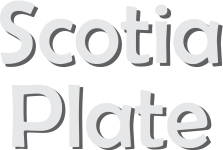
The Scotia Plate is a tectonic plate which is thought to have formed during the early Eocene when the Drake Passage was opened. The Plate was named after the Scotia Sea, which overlies it on the edge of the South Atlantic and the Southern Ocean. It is generally a minor plate whose movement is controlled by the two major plates, namely, the South American Plate and the Antarctic Plate. Though the Plate is formed as the oceanic crust, there is a small exception of the South Georgia Island to the southern tip of South America and its northeast edge. However, the Scotia Plate is rising at the Sandwich Islands and is accordingly pushed on the other side of the plate.
There had been changes in the ocean currents and shifts in paleoclimate due to the important implications of the timing of the formation of the Scotia Plate and the Drake Passage. The opening of the Drake Passage is largely attributed by the thermal isolation of Antarctica and formation of the Antarctic ice sheet. About 50 million years ago, during the early Eocene, the Drake Passage was a small opening with limited circulation. However, with the change in motion between the Antarctic Plate and the South American Plate caused the seafloor to spread and led to the formation of the Scotia Plate.
Scotia Plate is among the 38 small plates covering an area of about 1,600,000 sq. km. On the western boundary, the relative motion between the Antarctic Plate and the Scotia Plate is roughly around 13mm/year. The North Scotia ridge is formed when the northern edge of the Scotia Plate is bounded by the South American Plate.
It was on 17 November 2013 that one of the largest earthquakes, with a magnitude of 7.8 struck in the south of the Atlantic Ocean. This tremor of the Scotia Sea is approximately similar to the size of San Francisco earthquake of 1906, which was described as ‘one of the most significant earthquakes of all time’.



